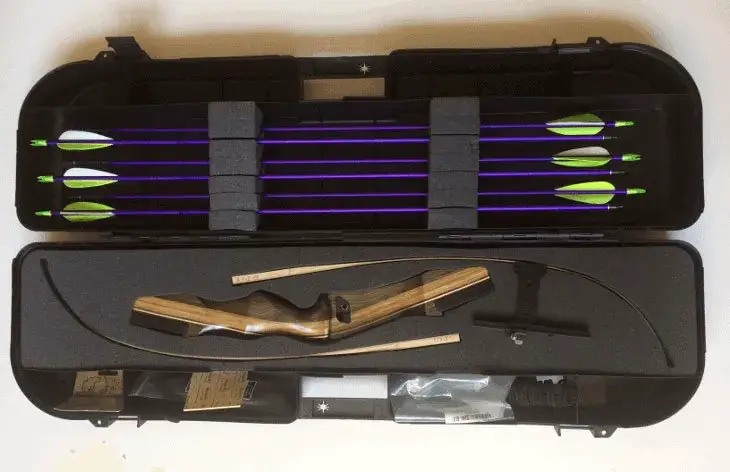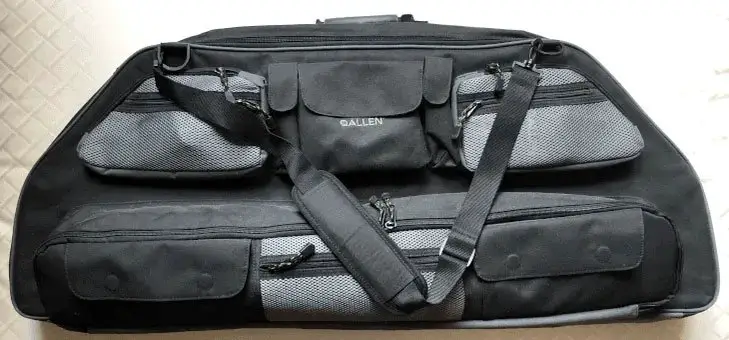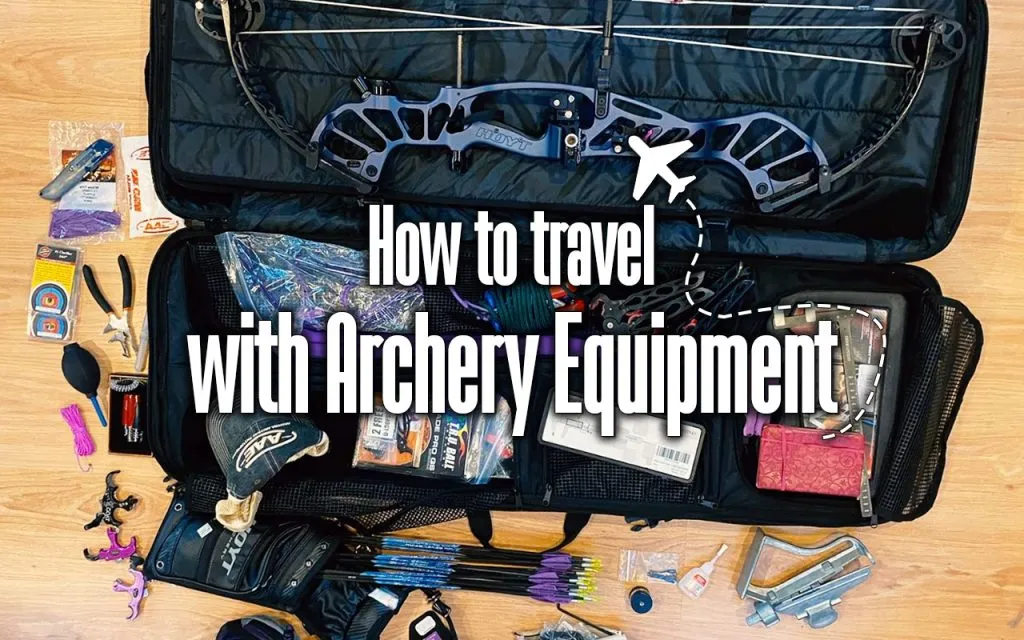For most of us, there is some planning involved! If you’re taking your archery equipment across state or foreign borders, there are a few particular laws and rules to be aware of before you depart, and not following them might get you into serious trouble.
So, in this post, we’ll go through each scenario and kind of travel—and cover some of the things to think about when traveling with archery equipment—in depth.
First Things First: Your Bow Case
Table of Contents
A bow case is used 99 percent of the time when you move a bow, a set of arrows, and various equipment from Point A to Point B. Bow cases come in two types:
- Hard cases have a solid outer shell and inner portions, usually consisting of foam or padding to keep bows and arrows as well as other equipment. and
- Soft cases are constructed of tough cloth and feature inner compartments and pouches for storing equipment.
Each kind of Bow case comes with its own set of benefits and drawbacks. Hard cases are generally more expensive, provide more protection, and are typically required for airplane travel and bus/train travel; soft cases are usually less costly, have a little more area inside, and can be utilized when traveling with your bow and equipment in a car.
You’ll be able to get hard cases for recurve bows and soft cases for a compound bow.
Here’s a tough case for a recurve bow:

Here’s a soft case that can fit a compound bow:

Soft cases are straightforward: you want a case that your bow can fit in, a long pocket for storing arrows, numerous pockets for bow releases, tuning tools, arm guards, and so on, as well as a shoulder strap. It is easy to understand.
Tough cases are a little more difficult to handle and have a variety of additional characteristics, including those that are crucial when it comes to travel. When you’re looking for one, keep the following in mind:
Shell Material. The walls of a case might be made of anything from thin plastic to ultra-thick materials that give excellent protection. The shells can also include a variety of characteristics, with more expensive versions being water-resistant, heat- and cold-resistant.
Wheels for Transport. These are usually found on hard cases rather than soft ones—they’re not much use if you just go back and forth to the range, but they’re quite useful if you’re a hunter who travels worldwide for a new game.
TSA-Approved Locks. If you’re going on a trip, getting a hard case with locks that the Transportation Security Administration’s agents can open using their master keys is good. When you walk up to the TSA checkpoint, they may inspect your luggage. They may, however, check it after you’ve stowed it, and if you aren’t using a TSA-friendly lock, they’ll cut through it.
In their marketing material, bow case manufacturers will often state whether the case is TSA-compliant; if you’re going to be flying and transporting your bow, it’s something to look for. A TSA-friendly lock isn’t very significant if you’re sure you’ll never be flying with a bow.
Pinned Hinges and Spring-Loaded Latches. There are some costly bow cases available, and that makes sense—if you think about it, there are some really expensive bows on the market, and buyers want to be sure they’re safe. High-quality hinges and latches might signal a quality product and indicate that it will last long.
Interior Tie-Downs. These are critical because when you’re traveling, especially if there’s turbulence or rough roads—and trust us, it happens—the innards of your bow case will be jostled about. You’ll need to secure your bow, but you’ll also want to make sure there are tie-downs for your arrows and any other goods you’ll need.
Comfortable Handles. Most of today’s bow cases have solid handles, but some of the previous bows we’ve acquired lacked them.
Warranties. We at Complete Guide to Archery take ownership seriously, and we urge you to do the same—look after your possessions, but always think about the warranty, especially if you’re the type of guy or gal who owns things that get roughed up.
By plane – How to travel with archery equipment
First and foremost, first and foremost—which should go without saying to anybody who. It should be evident to everyone that.
Carry-on luggage is not permitted to include bows and arrows
The Transportation Security Administration is adamant about this. Any bows or arrows you bring must be stored in a bow case, and that bow case must be inspected—which means you must surrender your luggage to airline personnel before boarding the plane so that it may go in the aircraft’s hold. People on a flight are not allowed to have checked luggage, and that is the whole idea: they don’t want passengers bringing dangerous baggage onto their aircraft.
Your Equipment Must Be Packaged Safely
Because your arrows and bows are in your luggage, they must be inspected. After your luggage has been checked, it may be x-rayed, opened, and examined. Any sharp edges on your gear—such as a broadhead on an arrow—should be sheathed and/or wrapped securely so that when a TSA officer (such as a security screen or a baggage handler) takes the equipment from your luggage, they will be safe from injury. This also applies to any sharp-edged equipment, so if you’re going on a hunting trip and will be bringing a knife or other sharp hunting gear, it’s a good idea to wrap it.
If You’re Traveling Internationally
It may be good to have your bow or bows booked with the United States Border Patrol.
Suppose you’re traveling to another country for an archery/field archery event or finally taking that dream hunting trip you’ve always wanted. In that case, you can get Form 4457, Certificate of Registration for Personal Effects Taken Abroad, at a Customs office before your departure date. When you return to the USA, you will be able to show that you didn’t purchase the bow while residing abroad, thus avoiding being charged duty.
Two Notes About Bow Cases
The TSA has a list of allowed bow cases, and marketing material on the bow case will indicate if the TSA approves the case. There are two things to consider regarding a bow case:
1) While there are both hard cases and soft cases available for airline travel, we recommend picking a hard case: The shell’s stiffness will protect your bow from the weight of other luggage piled on top of it, and since bows are finely-tuned instruments that might crack or break under too much pressure, you’ll probably want all the protection you can get.
Not only will your bow require that protection once it is put in the plane’s hold, but it’ll also require it when TSA agents/airline employees take it to the plane. Luggage is tossed, thrown, or frequently dropped during transit, and bows—even pricey ones—can break or be damaged. There’s nothing lower than pulling your bow out of its case at the end of a trip, only to discover it has been dinged or damaged; and
2) You should phone ahead and check to see whether your airline has a size restriction on your bow case. Bows are frequently within the recommended size range for luggage, but you should call ahead to be sure.
Before we get into our section about traveling by train, let’s repeat that list one more time and maybe say it a few more times later: always contact ahead and be prepared. If you have a flight booked, contact the airline ahead of time and double-check that everything is in order. That you’ll be allowed to transport your bow and arrows in a bow case, that the bow case you have is TSA- and airline-approved and not too large, and that you’ll be able to check it when you arrive at the airport. If you ask them if they have any specific information to share, prepare ahead of time, and then arrive a little early for your flight just in case you need to respond to any queries, they’ll probably say no.
Upon Arrival
When you reach your destination, you should be able to retrieve your bow and bow case from the baggage claim or a location designated by your airline/airport. Thank you for flying Complete Guide to Archery Airlines, and have a wonderful stay!
How to Travel with Archery Equipment by Train and Bus
You’ll need to inspect your archery gear just as you would if you were traveling by plane—without exception. You can’t bring archery equipment on the train or bus with you, and depending on the train or bus firm you’re using, there may be restrictions on how your archery luggage must be handled.
Not only must your bow case be a hard case, but the case itself cannot weigh more than 50 pounds or be longer than 75 inches in length for trains. For example, Amtrak is an excellent illustration of how this works.
Buses are an excellent example of how this works out: no carry-on, yes to checking. Greyhound is a perfect illustration of how this works on buses: there’s no such thing as a carry-on on them!
Subway and/or Crosstown Bus Traveling with Archery Equipment
Unfortunately, it’s out of the question to answer whether you can transport archery equipment on a city subway or bus. Different cities have different local and state laws, so you’ll need to do some research to figure out your city’s rules.
But we do remember one thing for sure: if you’re carrying a bow and/or arrows on the metro and it’s visible, you’ll be detained by your local authorities and likely charged with something. Please don’t do it. Check up your city’s regulations to see what’s permissible and whether there are any that address the transportation of archery equipment.
Some Travel Tips for Adventurous Archers
Here are a few things to remember while taking a bow with you:
Seriously, Call Ahead. We made a promise to tell you about it again, and here we are. If you’re traveling, don’t be caught off guard on your departure day by not knowing you need an X-type bow case or that your bow case was too big, or whatever the scenario may be. Call ahead to acquire all of the required details regarding transporting your archery equipment.
Leave Extra Time at the Airport. A bow is a weapon, and it’s only natural that the travel planners take it seriously. They may look at the contents of your luggage at several locations, so be prepared and schedule some extra time into your itinerary. This is a fantastic rule of life:
Be Courteous. They’re not doing it because they are mean or malicious; they are just doing their job. They’re trying to keep everyone safe, including bus drivers and TSA inspectors. They are an essential component of safe travel, and they should be treated with respect at all times. Be polite and let them do their duty.
Don’t Panic. If you arrive at your destination, go to the airline’s luggage carousel, but don’t find your bow case. For safety reasons, it may have been kept separate from other luggage, so don’t be shocked if it’s delivered to you by a gate agent or a ground crew.
Take Notes for Next Time. After a few trips with your archery equipment, it’ll all seem natural, and you’ll be able to plan your journey without much thinking. After a few tries, you’ll figure it out. So.
Enjoy the holiday, be nice, and have a wonderful trip!








